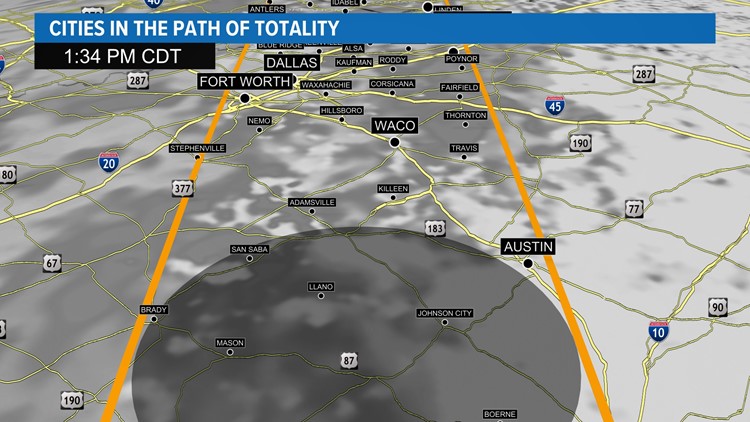HOUSTON — The anticipation is building, but Mother Nature may have other plans when it comes to viewing the upcoming solar eclipse.
We are now in range of high-resolution short-term weather models and we are getting a better understanding of what we might see on Monday. Cloud cover and showers are still expected across Texas with the possibility of thunderstorms late Monday afternoon.
The good news is that the latest weather models are showing that portions of central Texas in the path of totality could get breaks in cloud cover. This could provide folks northeast of Austin and San Antonio the opportunity to see the sun at maximum eclipse.

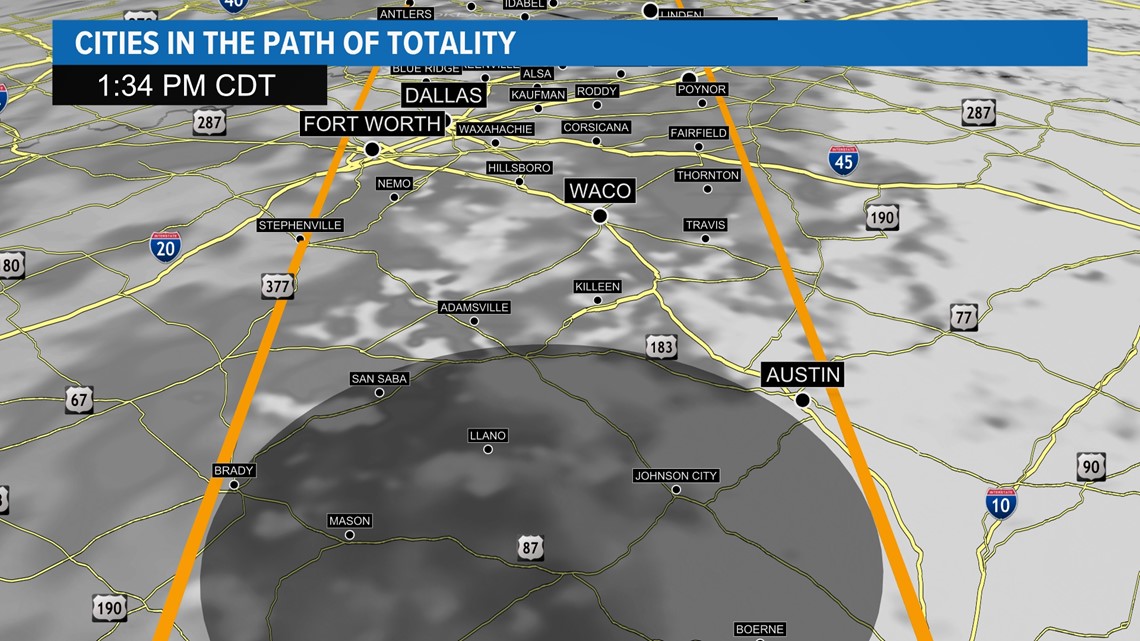
However, a thick cloud deck is expected to still remain over Southeast Texas with the chance of isolated showers and storms. Afternoon temperatures will reach the lower 80s. The eclipse in Houston will begin at 12:20 p.m. At 1:40 p.m., we will reach the maximum eclipse with 94% of the sun obstructed.
Even though clouds and isolated showers will be over Southeast Texas, we still may be able to see a brief loss of daylight. By 3:00 p.m., the eclipse will end with daylight returning back to normal.

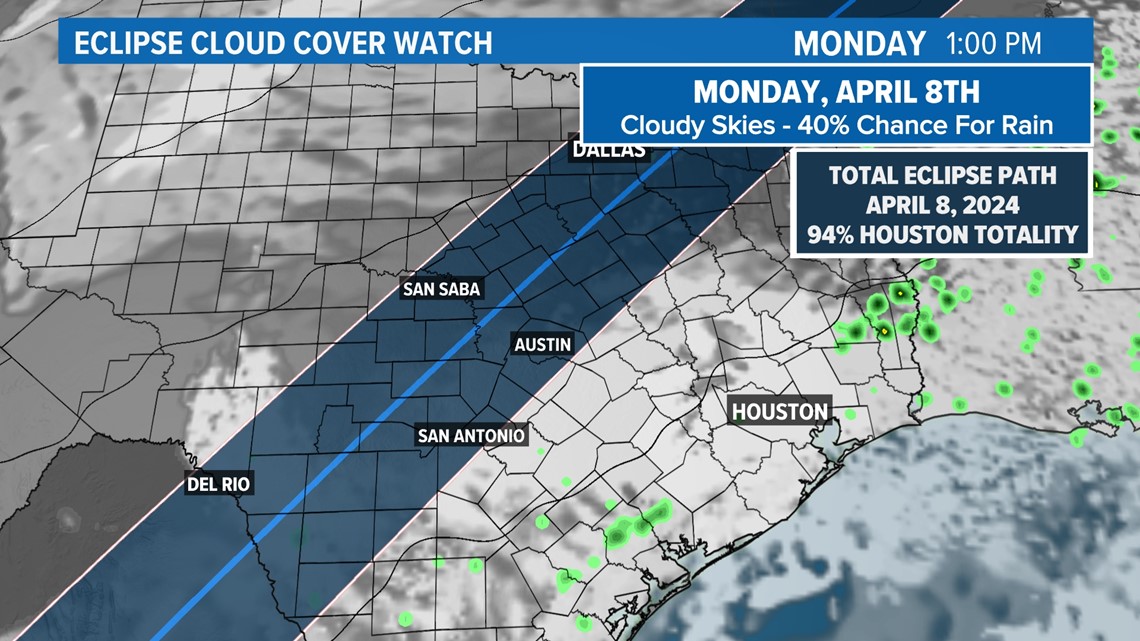
After the total solar eclipse ends, we are going to have to pay attention to weather conditions across Texas. Storms are expected to ramp up late Monday afternoon from 3 p.m. through 7 p.m. This is important for folks traveling from the path of totality in and around the Texas Hill Country.
The Storm Prediction Center includes a large portion of Texas under a slight risk for severe weather with the main threats being large hail and damaging winds.

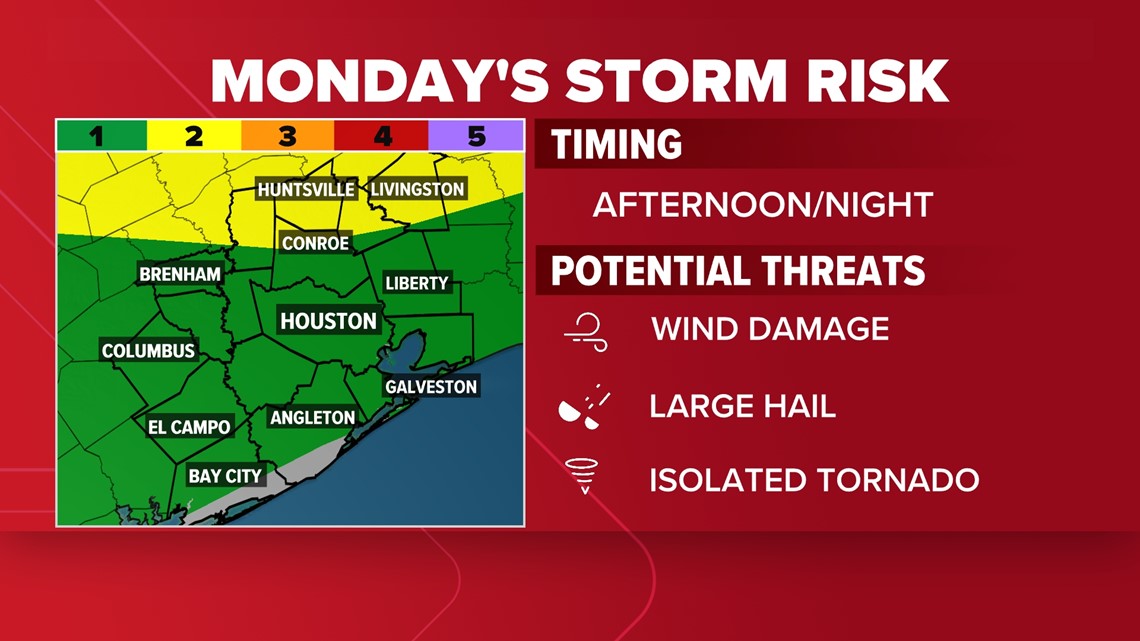

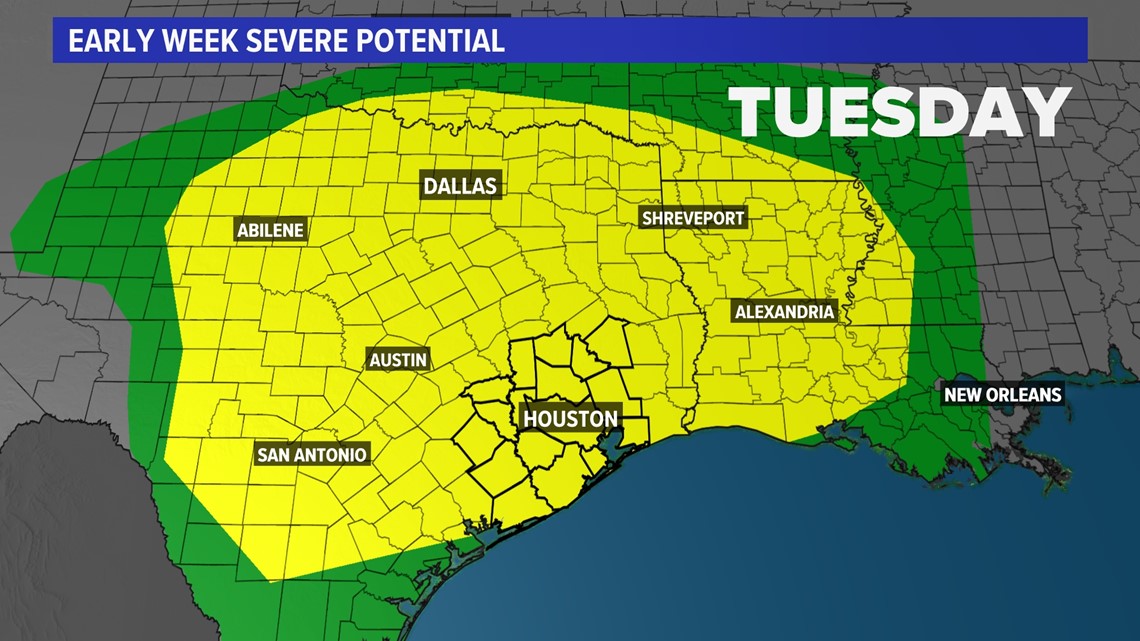

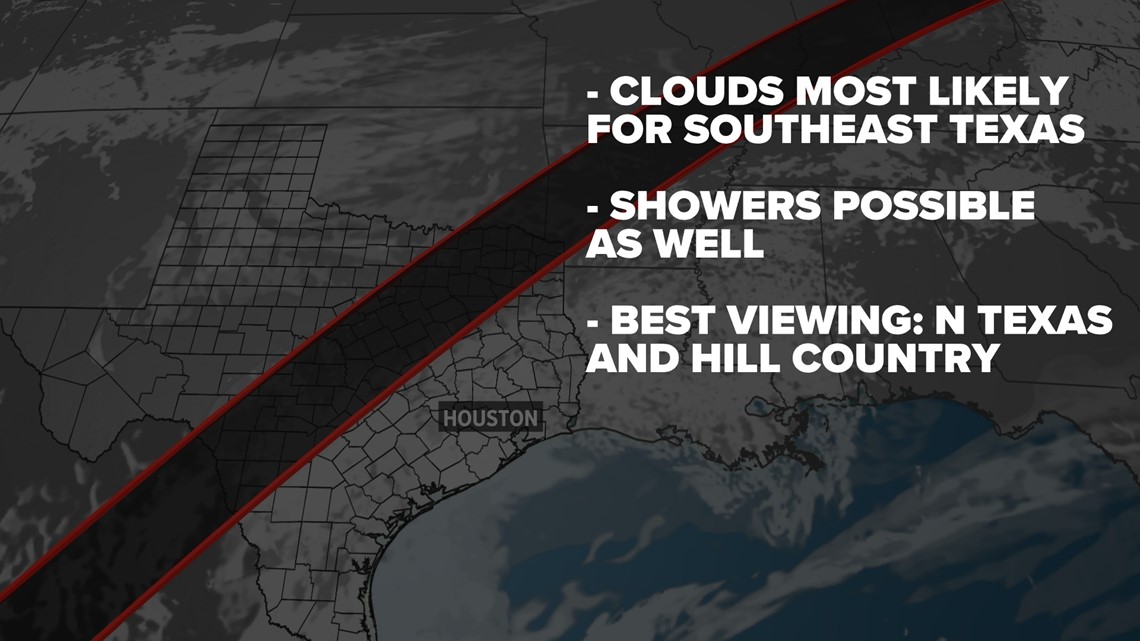
The Lone Star State is the first in the country that the path of totality will cross but it will also go across several other states. Other states in the path of totality include Oklahoma, Arkansas, Missouri, Illinois, Kentucky, Indiana, Ohio, Pennsylvania, New York, Vermont, New Hampshire and Maine. Portions of Canada will also see it.
The eclipse will travel 480 miles through Texas in about 25 minutes, entering at 1:27 p.m. and leaving the state at 1:52 p.m. CT. NASA provided a complete guide to tracking it. The path of totality will enter the country in Eagle Pass.
The path of totality -- where the moon fully covers the sun -- includes plenty of locations throughout Texas. Houston, unfortunately, is outside the show. A 94% partial eclipse will be visible if the clouds allow.

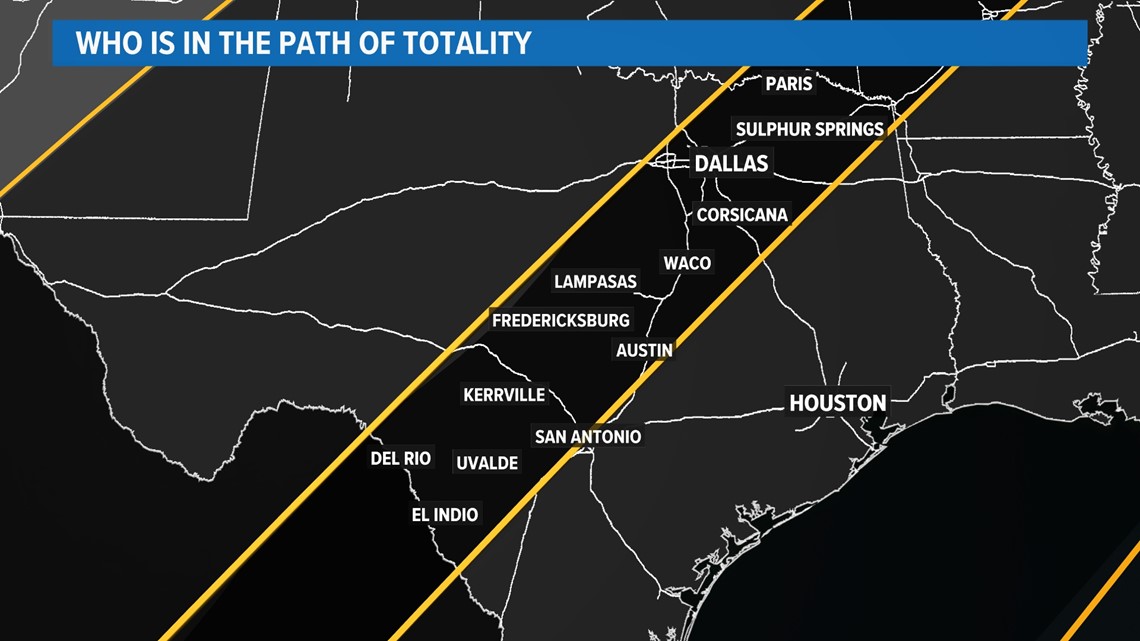
Viewers should always wear eclipse glasses during any solar eclipse, especially if there is no moment of totality.
The last time the U.S. had a total solar eclipse from coast to coast was on Aug. 21, 2017. North America won’t experience totality again until 2033, with Alaska getting sole dibs. Then that’s it until 2044, when totality will be confined to Western Canada, Montana and North Dakota. There won’t be another U.S. eclipse spanning coast to coast until 2045. That one will stretch from Northern California to Cape Canaveral, Florida.

